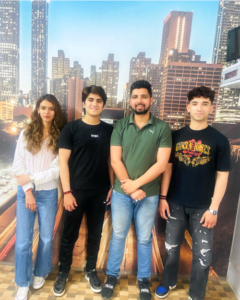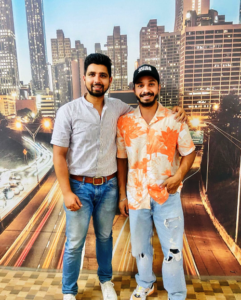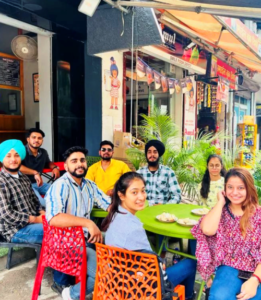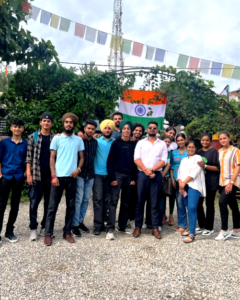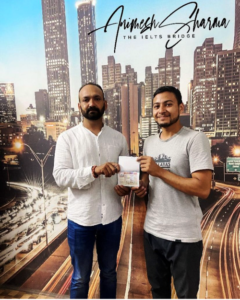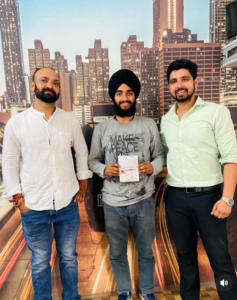Plain English Campaign
A We launched Plain English Campaign in 1979 with a ritual shredding of appalling government and municipal council forms in Parliament Square, London. We had become so fed up of people visiting our advice centre in Salford, Greater Manchester, to complain about incomprehensible forms that we thought we ought to take action. At the time the shredding seemed like merely throwing sand in the eyes of the charging lion, but it briefly caught the public imagination and left an impression on government and business. Although we’re pleased with the new plain English awareness in government departments, many local councils and businesses maintain a stout resistance to change. One council began a letter to its tenants about a rent increase with two sentences averaging 95 words, full of bizarre housing finance jargon and waffle about Acts of Parliament. The London Borough of Ealing sent such an incomprehensible letter to ISO residents that 40 of them wrote or telephoned to complain and ask for clarification. Many were upset and frightened that the council was planning to imprison them if they didn’t fill in the accompanying form. In fact, the letter meant nothing of the sort, and the council had to send another letter to explain.
B Plain legal English can be used as a marketing tactic. Provincial Insurance issued their plain English Home Cover policy in 1983 and sold it heavily as such. In the first 18 months, its sales rocketed, drawing in about an extra £1.5 million of business. Recently, the Eagle Star Group launched a plain English policy to a chorus of congratulatory letters from policyholders. People, it seems, prefer to buy a policy they can understand.
C Two kinds of instructions give us a lot of concern – medical labels and do-it-yourself products. With medical labels, there is a serious gap between what the professionals think is clear and what is really clear to patients. A survey by pharmacists Raynor and Sillito found that 31% of patients misunderstood the instruction on eye drops ‘To be instilled’, while 33% misunderstood ‘Use sparingly’. The instruction ‘Take two tablets 4 hourly’ is so prone to misunderstanding (for example, as 8 tablets an hour) that we think it should be banned. Unclear instructions on do-it-yourself products cause expense and frustration to customers. Writing the necessary instructions for these products is usually entrusted to someone who knows the product inside out, yet the best qualification for writing instructions is ignorance. The writer is then like a first-time user, discovering how to use the product in a step-by-step way. Instructions never seem to be tested with first-time users before being issued. So vital steps are missed out or components are mislabeled or not labelled at all. For example, the instructions for assembling a sliding door gear say: ‘The pendant bolt centres are fixed and should be at an equal distance from the centre of the door.’ This neglects to explain who should do the fixing and how the bolt centres will get into the correct position. By using an imperative and an active verb the instruction becomes much clearer: ‘Make sure you fix the centres of the pendant bolts at an equal distance from the centre of the door.’
D Effectively, the Plain English movement in the US began with President Jimmy Carter’s Executive Order 12044 of 23 March 1978, that required regulations to be written in plain language. There were earlier government efforts to inform consumers about their rights and obligations, such as the Truth in Lending Act (1969) and the Fair Credit Billing Act (1975), which emphasized a body of information that consumers need in simple language. But President Carter’s executive order gave the prestige and force of a president to the movement. All over the country isolated revolts or efforts against legalistic gobbledygook at the federal, state and corporate levels seemed to grow into a small revolution. These efforts and advances between the years 1978 and 1985 are described in the panel ‘The Plain English Scorecard’.
E The Bastille has not fallen yet. The forces of resistance are strong, as one can see from the case of Pennsylvania as cited in the Scorecard. In addition, President Ronald Reagan’s executive order of 19 February 1981, revoking President Carter’s earlier executive order, has definitely slowed the pace of plain English legislation in the United States. There are there main objections to the idea of plain English. They are given below, with the campaign’s answer to them:
F The statute would cause unending litigation and clog the courts. Simply not true in all the ten states with plain English laws for consumer contracts and the 34 states with laws or regulations for insurance policies. Since 1978 when plain English law went into effect in New York there have been only four litigations and only two decisions. Massachusetts had zero cases. The cost of compliance would be enormous. Translation of legal contracts into non-legal everyday language would be a waster of time and money. The experience of several corporations has proved that the cost of compliance is often outweighed by solid benefits and litigation savings. Citibank of New York made history in 1975 by introducing a simplified promissory note and afterwards simplified all their forms. Citibank counsel Carl Falsenfield says: ‘We have lost no money and there has been no litigation as a result of simplification.’ The cost-effectiveness of clarity is demonstrable. A satisfied customer more readily signs on the bottom line and thus contributes to the corporation’s bottom line. Some documents simply can’t be simplified. The only legal language that has been tested for centuries in the courts is precise enough to deal with a mortgage, a deed, a lease, or an insurance policy. Here, too, the experience of several corporations and insurance companies has proved that contracts and policies can be made more understandable without sacrificing legal effectiveness.
G What does the future hold for the Plain English movement? Today, American consumers are buffeted by an assortment of pressures. Never before have consumers had as many choices in areas like financial services, travel, telephone services, and supermarket products. There are about 300 long-distance phone companies in the US. Not long ago, the average supermarket carried 9,000 items; today, it carries 22,000. More importantly, this expansion of options – according to a recent report – is faced by a staggering 30 million Americans lacking the reading skills to handle the minimal demands of daily living. The consumer’s need, therefore, for information expressed in plain English is more critical than ever.
H What is needed today is not a brake on the movement’s momentum but another push toward plain English contracts from consumers. I still hear plain English on the TV and in the streets, and read plain English in popular magazines and best-sellers, but not yet in many functional documents. Despite some victories, the was against gobbledygook is not over yet. We do well to remember, the warning of Chrissie Maher, organizer of Plain English Campaign in the UK: ‘People are not just injured when medical labels are written in gobbledygook – they die. Drivers are not just hurt when their medicines don’t tell them they could fall asleep at the wheel – they are killed.’
Questions 1-6
Do the following statements agree with the information given in reading passage? In boxes 1-6 on your answer sheet, write
TRUE if the statement agrees with the information
FALSE if the statement contradicts the information
NOT GIVEN if there is no information on this
1. In marketing area, the spread of Plain English can generate economic benefit.
2. Because doctors tend to use jargon when they talk with patients, thereafter many patients usually get confused with medicine dose.
3. After successive election over U.S president Jimmy Carter, the effect of Plain English Campaign is less distinctive than that of the previous one.
4. The Plain English campaigner has a problem of talking with the officials.
5. Work check is made regularly by the judge in the court scenario.
6. Compared with the situation of the past, consumers are now facing less intensity of label reading pressure in a supermarket in America.
Questions 7-14
Complete the following summary of the paragraphs of reading passage. Using NO MORE THAN THREE WORDS from the reading passage for each answer.
Campaigners experienced a council renting document full of strange (7)…………… of housing in terms of an Act. They are anxious in some other field, for instance, when reading a label of medicine, there was an obvious (8)……………. for patients. Another notable field was on (9)……………… products, it not only additionally cost buyers but caused (10)…………….., thus writer should regard himself as a (11)…………….. However, oppositions against the Plain English Campaign under certain circumstances, e.g. (12)………………language had been embellished as an accurate language used in the (13)……………..The author suggested that nowadays new compelling force is needed from (14)……………………
Photovoltaics on the rooftop
A In the past, urban homeowners have not always had much choice in the way electricity is supplied to their homes. Now, however, there is a choice, and a rapidly increasing number of households worldwide are choosing the solar energy option. Solar energy, the conversion of sunlight into energy, is made possible through the use of ‘photovoltaics’, which are simple appliances that fit onto the roof of a house.
B The photovoltaics-powered home remains connected to the power lines, but no storage is required on-site, only a box of electronics (the inverter) to the interface between the photovoltaics and the grid network. Figure 1 illustrates the system. During the day, when the home may not be using much electricity, excess power from the solar array is fed back to the grid, to factories and offices that need daytime power. At night, power flows the opposite way. The grid network effectively provides storage. If the demand for electricity is well matched to when the sun shines, solar energy is especially valuable. This occurs in places like California in the US and Japan, where air-conditioning loads for offices and factories are large but heating loads for homes are small.
C The first systematic exploration of the use of photovoltaics on homes began in the US during the 1970s. A well-conceived program started with the sitting of a number of residential experiment stations’ at selected locations around the country, representing different climatic zones. These stations contained a number of ‘dummy’ houses, each with different solar-energy system design. Homes within the communities close to these stations were monitored to see how well their energy use matched the energy generated by the stations’ dummy roofs. A change in US government priorities in the early 1980s halted this program.
D With the US effort dropping away, the Japanese Sunshine Project came to the fore. A large residential test station was installed on Rokko Island beginning in 1986. This installation consists of 18 ‘dummy’ homes. Each equipped with its own 2-5 kilowatt photovoltaic system (about 20 – 50 square meters for each system). Some of these simulated homes have their own electrical appliances inside, such as TV sets, refrigerators and air conditioning units, which switch on and off under computer control providing a lavish lifestyle for the non-existent occupants. For the other systems, electronics simulate these household loads. This test station has allowed being explored in a systematic way, under well-controlled test conditions. With no insurmountable problems identified, the Japanese have used the experience gained from this station to begin their own massive residential photovoltaics campaign.
E Meanwhile, Germany began a very important ‘1,000 roof program’ in 1990, aimed at installing photovoltaics on the roofs of 1,000 private homes. Large federal and regional government subsidies were involved, accounting in most cases for 70% of the total system costs. The program proved immensely popular, forcing its extension to over 2,000 homes scattered across Germany. The success of this program stimulated other European countries to launch a similar program.
F Japan’s ‘one million roof program’ was prompted by the experience gained in the Rokko Island test site and the success of the German 1,000 roof program. The initially quoted aims of the Japanese New Energy Development Organization were to have 70,000 homes equipped with the photovoltaics by the year 2000, on the way to 1 million by 2010. The program made a modest start in 1994 when 539 systems were installed with a government subsidy of 50 percent. Under this program, entire new suburban developments are using photovoltaics.
G This is good news, not only for the photovoltaic industry but for everyone concerned with the environment. The use of fossil fuels to generate electricity is not only costly in financial terms, but also in terms of environmental damage. Gases produced by the burning of fossil fuels in the production of electricity are a major contributor to the greenhouse effect. To deal with this problem, many governments are now proposing stringent targets on the amount of greenhouse gas emissions permitted. These targets mean that all sources of greenhouse gas emissions including residential electricity use will receive closer attention in the future.
H It is likely that in the future, governments will develop building codes that attempt to constrain the energy demands of new housing. For example, the use of photovoltaics or the equivalent may be stipulated to lessen demands on the grid network and hence reduce fossil fuel emissions. Approvals for building renovations may also be conditional upon taking such energy-saving measures. If this were to happen, everyone would benefit. Although there is an initial cost in attaching the system to the rooftop, the householder’s outlay is soon compensated with the savings on energy bills. In addition, everyone living on the planet stands to gain from the more benign environmental impact.
Questions 15-20
The Reading Passage has nine paragraphs A-H. Which paragraph contains the following information?
15. examples of countries where electricity use is greater during the day than at night
16. a detailed description of an experiment that led to photovoltaics being promoted throughout the country
17. the negative effects of using conventional means of generating electricity
18. an explanation of the photovoltaic system.
19. the long-term benefits of using photovoltaics
20. a large campaign inspired by a country’s successful example
Questions 21-27
Do the following statements agree with the information given in reading passage? In boxes 21-27 on your answer sheet, write
TRUE if the statement agrees with the information
FALSE if the statement contradicts the information
NOT GIVEN if there is no information on this
21. Photovoltaics are used to store electricity.
22.Since the 1970s, the US government has provided continuous support for the use of photovoltaics on homes.
23. The solar-powered house on Rokko Island is uninhabited.
24. In 1994, the Japanese government was providing half the money required for installing photovoltaics on homes.
25. Germany, Italy, the Netherlands and Australia all have strict goals with regard to greenhouse gas emissions.
26. Residential electricity use is the major source of greenhouse gas emission.
27. Energy-saving measures must now be included in the design of all new homes and improvements to buildings.
Water Filter
A An ingenious invention is set to bring clean water to the third world, and while the science may be cutting edge, the materials are extremely down to earth. A handful of clay yesterday’s coffee grounds and some cow manure are the ingredients that could bring clean, safe drinking water to much of the third world.
B The simple new technology, developed by ANU materials scientist Mr. Tony Flynn, allows water filters to be made from commonly available materials and fired on the ground using cow manure as the source of heat, without the need for a kiln. The filters have been tested and shown to remove common pathogens (disease-producing organisms) including E-coli. Unlike other water filtering devices, the filters are simple and inexpensive to make. “They are very simple to explain and demonstrate and can be made by anyone, anywhere,” says Mr. Flynn. “They don’t require any western technology. All you need is terracotta clay, a compliant cow and a match.”
C The production of the filters is extremely simple. Take a handful of dry, crushed clay, mix it with a handful of organic material, such as used tea leaves, coffee grounds or rice hulls, add enough water to make a stiff biscuit-like mixture and form a cylindrical pot that has one end closed, then dry it in the sun. According to Mr. Flynn, used coffee grounds have given the best results to date. Next, surround the pots with straw; put them in a mound of cow manure, light the straw and then top up the burning manure as required. In less than 60 minutes the filters are finished. The walls of the finished pot should be about as thick as an adult’s index. The properties of cow manure are vital as the fuel can reach a temperature of 700 degrees in half an hour and will be up to 950 degrees after another 20 to 30 minutes. The manure makes a good fuel because it is very high in organic material that bums readily and quickly; the manure has to be dry and is best used exactly as found in the field, there is no need to break it up or process it any further.
D “A potter’s din is an expensive item and can could take up to four or five hours to get upto 800 degrees. It needs expensive or scarce fuel, such as gas or wood to heat it and experience to run it. With no technology, no insulation and nothing other than a pile of cow manure and a match, none of these restrictions apply,” Mr. Flynn says.
E It is also helpful that, like terracotta clay and organic material, cow dung is freely available across the developing world. “A cow is a natural fuel factory. My understanding is that cow dung as a fuel would be pretty much the same wherever you would find it.” Just as using manure as a fuel for domestic uses is not a new idea, the porosity of clay is something that potters have known about for years, and something that as a former ceramics lecturer in the ANU School of Art, Mr. Flynn is well aware of. The difference is that rather than viewing the porous nature of the material as a problem — after all not many people want a pot that won’t hold water — his filters capitalize on this property.
F Other commercial ceramic filters do exist, but, even if available, with prices starting at US$5 each, they are often outside the budgets of most people in the developing world. The filtration process is simple, but effective. The basic principle is that there are passages through the filter that are wide enough for water droplets to pass through, but too narrow for pathogens. Tests with the deadly E-coli bacterium have seen the filters remove 96.4 to 99.8 per cent of the pathogen — well within safe levels. Using only one filter it takes two hours to filter a litre of water. The use of organic material, which burns away after firing, helps produce the structure in which pathogens will become trapped. It overcomes the potential problems of finer clays that may not let water through and also means that cracks are soon halted. And like clay and cow dung, it is universally available.
G The invention was born out of a World Vision project involving the Manatuto community in East Timor The charity wanted to help set up a small industry manufacturing water filters, but initial research found the local clay to be too fine — a problem solved by the addition of organic material. While the AF problems of producing a working ceramic filter in East Timor were overcome, the solution was kiln-based and particular to that community’s materials and couldn’t be applied elsewhere. Manure firing, with no requirement for a kiln, has made this zero technology approach available anywhere it is needed. With all the components being widely available, Mr. Flynn says there is no reason the technology couldn’t be applied throughout the developing world, and with no plans to patent his idea, there will be no legal obstacles to it being adopted in any community that needs it. “Everyone has a right to clean water, these filters have the potential to enable anyone in the world to drink water safely,” says Mr. Flynn.
Questions 28-33
Complete the flow chart, using NO MORE THAN TWO WORDS from the reading passage for each answer.
Guide to Making Water Filters
Step one: combination of (28)………………. and organic material, with sufficient (29)……………. to create a thick mixture sun dried.
Step two: pack (30)………………….. around the cylinders place them in (31)……………… which is as burning fuel for firing (maximum temperature: (32)………………….) filter being baked in under (33)…………………..
Questions 34-37
Do the following statements agree with the information given in reading passage? In boxes 34-37 on your answer sheet, write
TRUE if the statement agrees with the information
FALSE if the statement contradicts the information
NOT GIVEN if there is no information on this
34. It takes half an hour for the manure to reach 950 degrees
35. Clay was initially found to be unsuitable for pot making
36. Coffee grounds are twice as effective as other materials
37. E-coli is the most difficult bacteria to combat
Questions 38-40
Choose the correct letter, A, B, C or D.
38. When making the pot, the thickness of the wall
A is large enough to let the pathogens to pass.
B varied according to the temperature of the fuel,
C should be the same as an adult’s forefinger.
D is not mentioned by Mr. Flynn.
39. What is true about the charity, it
A failed in searching the appropriate materials.
B successfully manufacture a kiln based ceramic filter to be sold worldwide
C found that the local clay are good enough.
D intended to help build a local filter production factory.
40. Mr. Flynn’s design is purposely not being patented
A because he hopes it can be freely used around the world
B because he doesn’t think the technology is perfect enough,
C because there are some legal obstacles.
D because the design has already been applied thoroughly.


